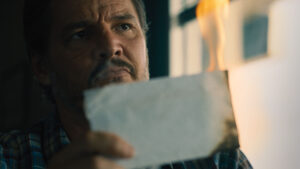A still from Jason DaSilva’s documentary ‘When I Walk.’
Jason DaSilva
Director Jason DaSilva has been a prolific filmmaker for the past 10 years. Many of his films have won awards; and each one of these works advanced Jason’s objective to give voice to those on the periphery of society. He recently produced and directed an Op-Doc (opinion documentary) for the New York Times called The Long Wait, published in January 2013. DaSilva’s latest film, When I Walk, was an official selection of the 2013 Sundance Film Festival.
In the making of When I Walk, I knew that I was charting new territory for myself as a filmmaker, moving into the autobiographical documentary space. Flipping the camera on myself created a whole new set of variables and challenges. If you are so brave and inclined to do something within the participatory filmmaker genre, following the traditions of Michael Moore and Morgan Spurlock, I wish you luck. Outlined below are some of my lessons learned while doing this production.
1) Lose Your Ego
I was doing something beyond my physical capabilities because I was tracking the physical changes I was undergoing due to Multiple sclerosis. I found myself vulnerable to the gaze of the camera. This is not something that a twenty-five year old, slightly cocky and control hungry documentary filmmaker takes well to. Grin and bear it- hopefully you get out on the other side somewhat unscathed.
2) Keep Creative Control
As much as possible, it is important to be involved in the process – even if you’re not behind the camera. It is important to be that annoying director who asserts him or herself in every creative aspect of the shoot. The footage will speak wonders because of your effort.
3) Respect Your Mother
She is just trying to be helpful, I guess. (You’ll know what I mean if you watch my film.)
4) Keep The Camera Rolling
In this day and age, there is no reason not to have a shooting ratio of 200:1 to 400:. Today, with the amount of hard drive storage space, there is no reason to have the cameras off. You’ll be surprised what ends up becoming cinematic gems and on the flip side, what ends up on the cutting room floor. The best advice that I have for this type of filmmaking is to be militant and, at all costs, keep those cameras rolling. An example of this is: some of the best footage I got was when I was flat on my face, unable to get up again- it spoke wonders to the trials of multiple sclerosis, but I had to go through this just to catch it on film for the rest of the world to see.
5) Believe In Your Creative Self
For my film, When I Walk, I wanted to try to do something that has rarely been done before: to show the scientific and medical model of disability alongside the social and personal model of disability. This really meant thinking outside of the box, and I found refuge and inspiration from viewing my creative self before I got multiple sclerosis. I would suggest having a good, strong, creative base that supports you throughout your filmmaking efforts, which could go on for longer than expected. Mine was a seven-year production.




